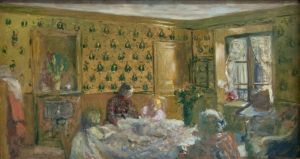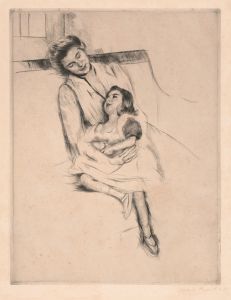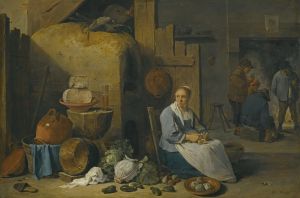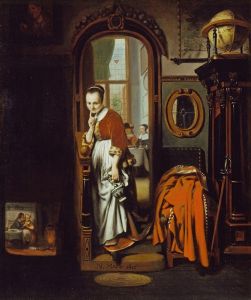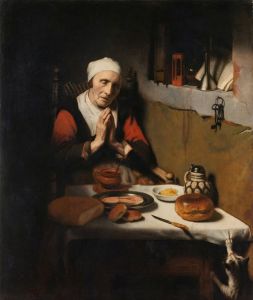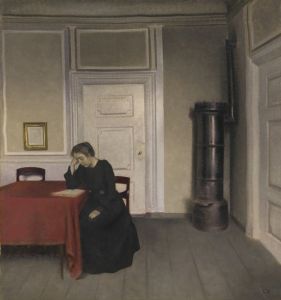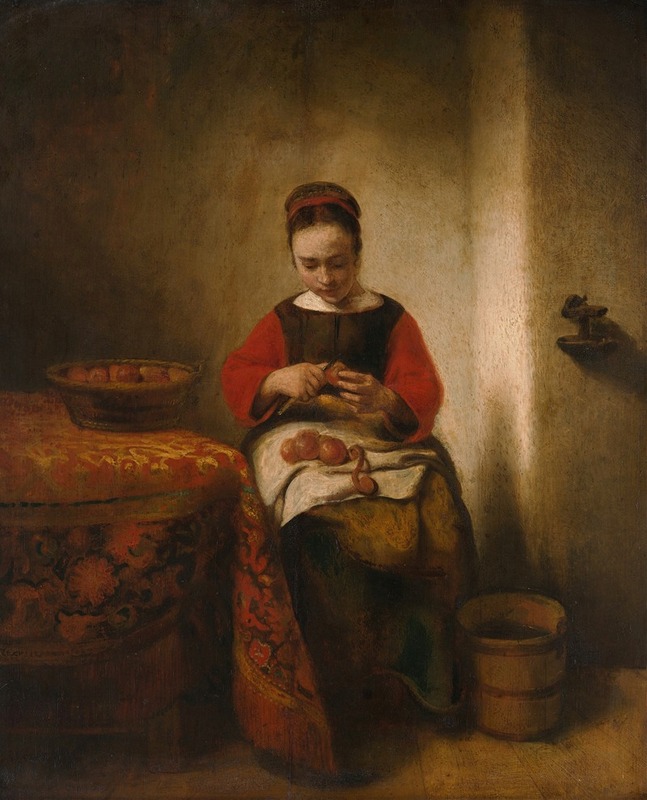
Young Woman Peeling Apples
A hand-painted replica of Nicolaes Maes’s masterpiece Young Woman Peeling Apples, meticulously crafted by professional artists to capture the true essence of the original. Each piece is created with museum-quality canvas and rare mineral pigments, carefully painted by experienced artists with delicate brushstrokes and rich, layered colors to perfectly recreate the texture of the original artwork. Unlike machine-printed reproductions, this hand-painted version brings the painting to life, infused with the artist’s emotions and skill in every stroke. Whether for personal collection or home decoration, it instantly elevates the artistic atmosphere of any space.
"Young Woman Peeling Apples" is a painting by the Dutch artist Nicolaes Maes, created during the 17th century. Maes, a prominent figure of the Dutch Golden Age, was a student of Rembrandt and is known for his genre scenes and portraits. This particular work exemplifies his skill in capturing everyday domestic life, a theme that became increasingly popular in Dutch art during this period.
The painting depicts a young woman seated at a table, peeling apples. The composition is intimate and serene, focusing on the quiet, mundane activity of the subject. The woman is dressed in modest attire typical of the time, and the setting is a simple, well-lit interior. The light source, likely a window outside the frame, illuminates the scene, creating a soft interplay of light and shadow that highlights the textures of the woman's clothing, the apples, and the surrounding objects.
Maes's use of light and color in this painting reflects the influence of his teacher, Rembrandt, particularly in the warm tonalities and the subtle gradations of light. However, the subject matter aligns more closely with the genre scenes that Maes became known for later in his career, moving away from the biblical and historical themes he explored under Rembrandt's tutelage.
"Young Woman Peeling Apples" is a testament to the Dutch Golden Age's fascination with domesticity and the depiction of ordinary life. Paintings like this one often carried moral or symbolic undertones, though the specific intent behind this work is not documented. It may simply celebrate the virtues of diligence and simplicity, values that were esteemed in 17th-century Dutch society.
The painting is currently housed in the Mauritshuis museum in The Hague, Netherlands, which holds a significant collection of Dutch Golden Age artworks. It remains a fine example of Maes's ability to combine technical skill with a keen eye for the subtleties of human activity and emotion.





